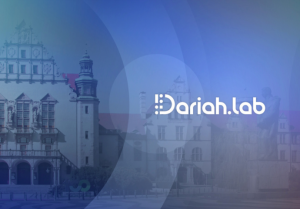December will mark the end of the DARIAH-PL development project, of which our University, among others, is a partner. As part of the European DARIAH (Digital Research Infrastructure for the Arts and Humanities) network, the DARIAH-PL consortium creates, grows and maintains a digital research infrastructure for the humanities and arts sciences, Dariah.lab, listed on the Polish Map of Research Infrastructure in the Social Sciences and Humanities.
Dariah.lab is intended for public entities conducting scientific research (e.g. universities, research institutes), institutions able to use the facilities and data to fulfil their missions (e.g. public and private arts and culture institutions, as well as NGOs disseminating cultural data), and businesses (e.g. for R&D work on modelling history or its use in education). It serves the acquisition, storage and integration of cultural data from the humanities and social sciences with the processing, visualisation and sharing of digital resources.
The infrastructure allows to process the multimedia materials, including textual, musical, visual and spatial resources (e.g. monuments). Access to these resources is possible in the form of individual entities, assemblies or collections (e.g. multimodal data) and a semantic network of links between these objects. Consequently, the completion of interdisciplinary research, requiring the use of a wide variety of materials, is more easily and more strongly connected to the operators.
Dariah.lab modules at Adam Mickiewicz University (UAM)
Six modules of the Dariah. lab digital infrastructure has been developed at Adam Mickiewicz University. These include.
The Multico multimodal corpus and the multimodal recording studio were developed at the Faculty of Modern Languages of the Adam Mickiewicz University in Poznań. The coordinator of the module is Prof. Maciej Karpinski. The resources include a collection of audio and video recordings with a multilayer description of speech, gesture and body movement. The speaking styles include conference recordings, parliamentary speeches and television conversations about sport, as well as task-oriented dialogues. Thanks to the funds from the DARIAH.Lab project, a professional studio was equipped to record multimodal data at Collegium Novum
The focus of the Philological Hub, coordinated by Professor Miroslaw Wobalis, is on the development of tools for literary and linguistic research. Among other things, the module provides tools for deep source analysis, mapping and visualizing literary works or creating and researching electronic literature. In the area of source acquisition, approx. 10,000 pages of “Kaliszanin,” a periodical published in the 19th century in the Russian partition and previously available only in small portions, have been digitized, processed and deposited in a secure repository.
The HANOI tools for analyzing translators’ handwritten notes, among other things, investigating and collecting the translators' notes. The simultaneous interpreters and conference translators, working at a very high pace, use a specific note-taking system. A team based at the Faculty of English and led by Dr Anna Jelec is developing tools to examine these notes. With these, the translator will, for instance, be given recommendations on how to improve competence.
The Linguomus - music and speech analysis tools, coordinated by Prof. Piotr Podlipniak and being created at the Institute of Musicology in the Faculty of Arts Sciences. It includes the transformation of rooms for the future laboratory and, for example, the purchase and configuration of equipment allowing the registration of physiological parameters of research participants. Simultaneously, a software system for the automatic analysis of recordings and a so-called music waveform database is being developed.
The Audiovisual Archives, coordinated by Kamila Kłudkiewicz, PhD, provides the unique collections gathered and digitized at the Faculty of Arts Sciences, which include about 40,000 items (reproductions of works of art), as well as documents and audio recordings. The module is equipped with reproduction tools bought and configured within the Dariah. lab project.
The module features a digital database containing the resources of the AMU Faculty of Arts Studies – Audiovisual Archives (scans of documents, photographs, graphics, sound recordings), with extensive record functionality, support for “hashtags”, administrator-definable list of meta-information with support for dictionaries and access restriction, and the possibility of record merging. The AMU Faculty of Arts Studies – Audiovisual Archives will also offer a fee-based service for digitising audio information from analogue media.
Diachronic text analysis tools - dating, normalisation and text search tools are created at the Faculty of Mathematics and Computer Science under the supervision of Professor Krzysztof Jassem. One of the tools is software for the automatic diachronic normalisation of Polish texts. It makes it possible to 'modernise' historical texts by converting them into the language we speak today. Other software tools include text dating and information retrieval.
Open seminar 'Season for the Digital Humanities'
One of the closing activities in the project is an open seminar to be held on 21-22 November in the Lubrański Auditorium at the Collegium Minus. Within the meeting, the Poznan partners - Adam Mickiewicz University, Poznan; Poznan University of Technology; the Institute of Literary Research of the Polish Academy of Sciences and the Poznan Supercomputing and Networking Centre - shall demonstrate the results of their work.
Registration for the event is required. For more information on the seminar, the programme and a registration link, please visit the event website: https://lab.dariah.pl/en/aktualnosci/season-for-digital-humanities/
